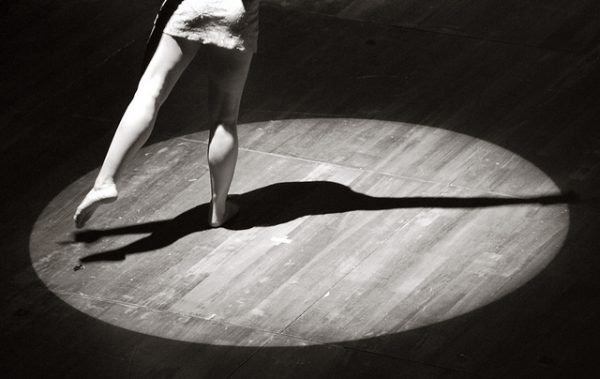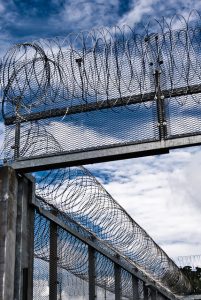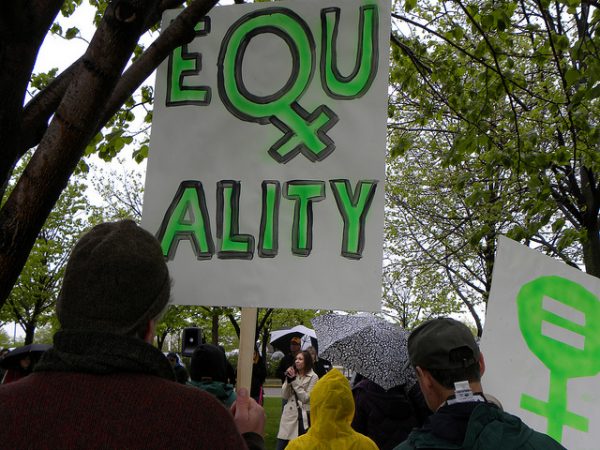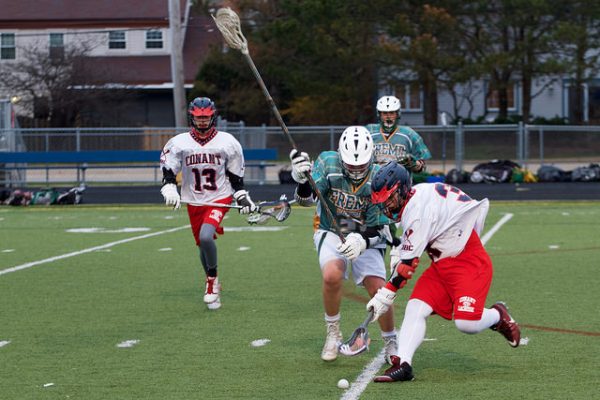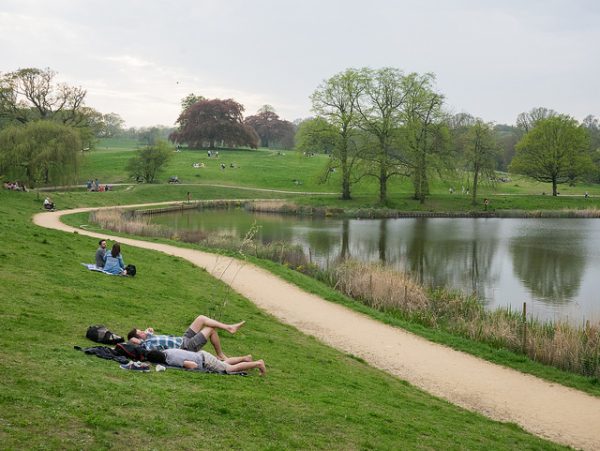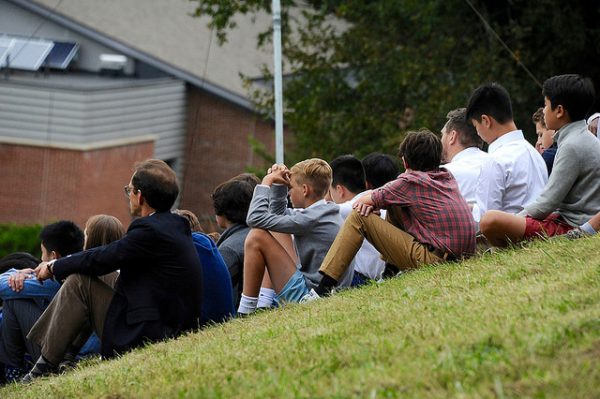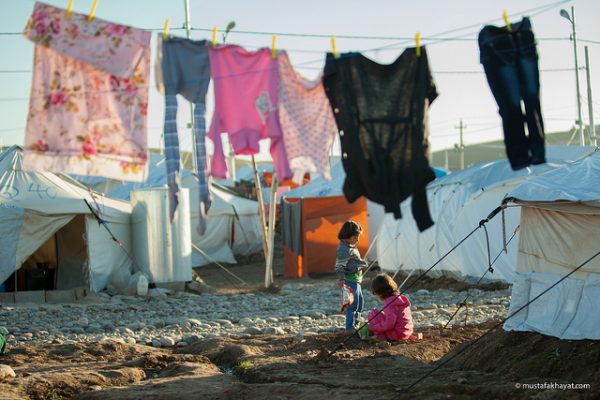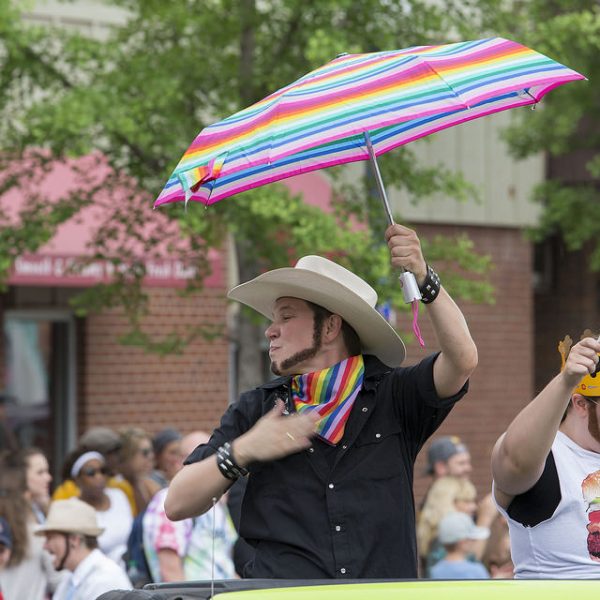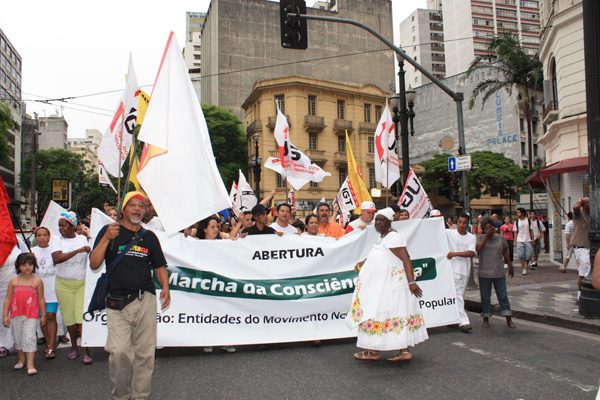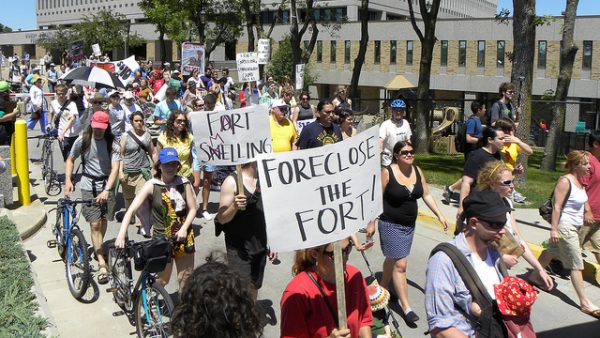
Originally posted October 9, 2018.
In recent months, a homeless encampment of over 300 people — most of whom are American Indian — has formed along a highway noise wall in Minneapolis. The encampment has been self-proclaimed the “Wall of Forgotten Natives” by residents and Indigenous activists who point out that much of Minneapolis is built on stolen Dakota land. Social and health service providers have mobilized around the encampment, and city officials have worked with community leaders to begin a relocation of people at the encampment to more stable housing on Red Lake Nation land. The wider context for the establishment of the camp, American Indian solidarity and resistance to disbanding the camp, as well as the government’s response, all highlight the process of settler colonialism.
In the United States, settler colonialism is defined as the control of land and its resources by white settlers who seek political power/control in a new space (i.e. like “regular” colonialism) through both displacement and violence against Indigenous persons in order to eventually replace the Native population (i.e. unlike “regular” colonialism). Until recently, studies of Indigenous people have largely been absent from sociological research and some have referred to this as sociology’s “complicity in the elimination of the native.” Scholars have begun to incorporate settler colonialism into research on the domination and dispossession of various racial and ethnic groups.
- Michael Warren Murphy. 2016. “No Beggars Among Them: Primitive Accumulation, Settler Colonialism, and the Dispossession of Narragansett Indian Land.” Humanity & Society 42(1): 45-67.
- Evelyn Nakano Glenn. 2015. “Settler Colonialism as Structure: A Framework for Comparative Studies of U.S. Race and Gender Formation.” Sociology of Race and Ethnicity 1(1): 54-74.
In Minnesota, American Indians face the consequences of settler colonialism everyday: generational trauma from historical violence and boarding schools while at the same time, confronting a host of contemporary inequities in health, exposure to violence and the foster care system between Natives and non-Natives. At the national level, the U.S. government’s urban relocation programs during the 1950s serve as further examples of settler colonial logic and contemporary homelessness among Minnesota’s urban Natives today and their political response. While these policies encouraged Natives to move from what were economically deprived reservations to what was promised as training and employment in urban areas, they faced intense discrimination. By 1969, unemployment among urban Natives was nearly ten times the national average and Native incomes were less than half of the national poverty level.
- Theodore D. Graves. 1974. “Urban Indian Personality and the “Culture of Poverty.” American Ethnologist 1(1): 65-86.
- Matthew C. Snipp. 1992. “Sociological Perspectives on American Indians.” Annual Review of Sociology 18: 351-371.
After the U.S. government failed to assimilate Native people through relocation in the 1950s, their attempt to end the legal status of what it meant to be a “federally recognized tribe” led to American Indian resistance across the United States and into the social movement fold of the 1960s and 1970s. Founded in 1968, the American Indian Movement was started in Minneapolis, and Minnesota is a historically important site of resistance to settler colonialism among Native peoples. American Indians continue to resist settler colonial practices and beliefs today. One example of this includes Indigenous protests against federally recognized holidays like Columbus Day and Thanksgiving, which are embedded in settler colonial stories of the past that “whitewash” events and stereotype Indigenous people. Other acts of resistance include ceremonies acknowledging genocide and other violent acts by the U.S. government. Just last spring, Dakota activists illustrated such resistance to the Walker Art Center’s decision to host a piece of a “scaffold” similar to that of 38 Dakota men who were hanged following the U.S.-Dakota War of 1862.
- Erich W. Steinman. 2012. “Colonial Power and the American Indian Sovereignty Movement: Forms of Domination, Strategies of Transformation.” American Journal of Sociology 117(4): 1073-1130.
- Erich W. Steinman. 2016. “Decolonization Not Inclusion: Indigenous Resistance to American Settler Colonialism.” Sociology of Race and Ethnicity 2(2): 219–36.
The “Wall of Forgotten Natives” highlights both the settler colonial practices that make such a homeless encampment possible but also demonstrate how American Indians have continually resisted settler colonial ideas and actions.
The authors respectfully acknowledge that the University of Minnesota stands on Dakota and Ojibwe peoples’ traditional lands.

